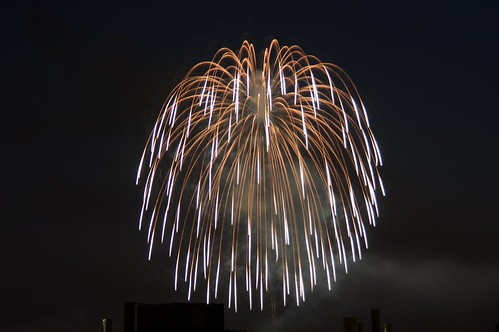Blast-off

IMG_5524, originally uploaded by joelhousman.

IMG_5524, originally uploaded by joelhousman.

IMG_5549, originally uploaded by joelhousman.

IMG_5557, originally uploaded by joelhousman.

Burst Close-up, originally uploaded by joelhousman.

IMG_5115, originally uploaded by joelhousman.
What is it with photographers these days? Are they really all terrorists, or does everyone just think they are?
Since 9/11, there has been an increasing war on photography. Photographers have been harrassed, questioned, detained, arrested or worse, and declared to be unwelcome. We've been repeatedly told to watch out for photographers, especially suspicious ones. Clearly any terrorist is going to first photograph his target, so vigilance is required.
Except that it's nonsense. The 9/11 terrorists didn't photograph anything. Nor did the London transport bombers, the Madrid subway bombers, or the liquid bombers arrested in 2006. Timothy McVeigh didn't photograph the Oklahoma City Federal Building. The Unabomber didn't photograph anything; neither did shoe-bomber Richard Reid. Photographs aren't being found amongst the papers of Palestinian suicide bombers. The IRA wasn't known for its photography. Even those manufactured terrorist plots that the US government likes to talk about -- the Ft. Dix terrorists, the JFK airport bombers, the Miami 7, the Lackawanna 6 -- no photography.
Given that real terrorists, and even wannabe terrorists, don't seem to photograph anything, why is it such pervasive conventional wisdom that terrorists photograph their targets? Why are our fears so great that we have no choice but to be suspicious of any photographer?
Because it's a movie-plot threat.
A movie-plot threat is a specific threat, vivid in our minds like the plot of a movie. You remember them from the months after the 9/11 attacks: anthrax spread from crop dusters, a contaminated milk supply, terrorist scuba divers armed with almanacs. Our imaginations run wild with detailed and specific threats, from the news, and from actual movies and television shows. These movie plots resonate in our minds and in the minds of others we talk to. And many of us get scared.
Terrorists taking pictures is a quintessential detail in any good movie. Of course it makes sense that terrorists will take pictures of their targets. They have to do reconnaissance, don't they? We need 45 minutes of television action before the actual terrorist attack -- 90 minutes if it's a movie -- and a photography scene is just perfect. It's our movie-plot terrorists that are photographers, even if the real-world ones are not.
The problem with movie-plot security is it only works if we guess the plot correctly. If we spend a zillion dollars defending Wimbledon and terrorists blow up a different sporting event, that's money wasted. If we post guards all over the Underground and terrorists bomb a crowded shopping area, that's also a waste. If we teach everyone to be alert for photographers, and terrorists don't take photographs, we've wasted money and effort, and taught people to fear something they shouldn't.
And even if terrorists did photograph their targets, the math doesn't make sense. Billions of photographs are taken by honest people every year, 50 billion by amateurs alone in the US And the national monuments you imagine terrorists taking photographs of are the same ones tourists like to take pictures of. If you see someone taking one of those photographs, the odds are infinitesimal that he's a terrorist.
Of course, it's far easier to explain the problem than it is to fix it. Because we're a species of storytellers, we find movie-plot threats uniquely compelling. A single vivid scenario will do more to convince people that photographers might be terrorists than all the data I can muster to demonstrate that they're not.
Fear aside, there aren't many legal restrictions on what you can photograph from a public place that's already in public view. If you're harassed, it's almost certainly a law enforcement official, public or private, acting way beyond his authority. There's nothing in any post-9/11 law that restricts your right to photograph.
This is worth fighting. Search "photographer rights" on Google and download one of the several wallet documents that can help you if you get harassed; I found one for the UK, US, and Australia. Don't cede your right to photograph in public. Don't propagate the terrorist photographer story. Remind them that prohibiting photography was something we used to ridicule about the USSR. Eventually sanity will be restored, but it may take a while.
This article originally appeared on Bruch Schneier's Blog
A fellow DC Twitterer and social media guru who works for National Public Radio (NPR) by the name of Andy Carvin took a new gigapan camera to Union Station here in Washington DC yesterday to test if out. NPR is thinking of using it for a story soon and they need to test it more in order to become familiar with it. He was erroneously hassled by the rent-a-cops while attempting this.